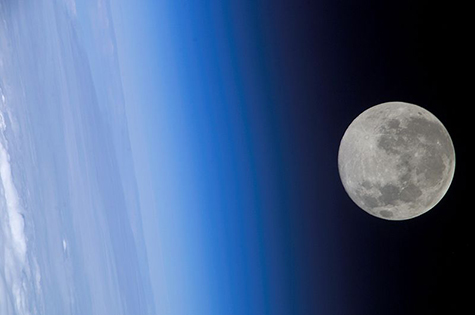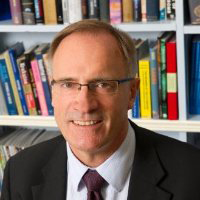
Alex N. Halliday, PhD, a professor and head of the Mathematical, Physical and Life Sciences Division at the University of Oxford in England, will deliver the McDonnell Distinguished Lecture at 7 p.m. Wednesday, March 5, at Washington University in St. Louis’ Whitaker Hall, Room 100.
The lecture, which is sponsored by WUSTL’s McDonnell Center for the Space Sciences, is free and open to the St. Louis community.
Halliday will describe the current understanding of the solar system’s formation, particularly its mix of rocky planets, gas giants and icy planets. The one part of the story we have not nailed down, he said, is the origin of Earth’s moon.
“Since the days of Kant and Laplace, it has been theorized that our solar system formed from a swirling disk of gas and dust,” Halliday said. “We can now find evidence of such disks and planets around other stars. Any theory of planet formation has to explain how such a disk gave rise to our own solar system, with outer gas giant and icy planets, as well as inner rocky terrestrial or Earth-like planets.
“Nowadays it is recognized that terrestrial planets had different accretion histories,” Halliday continued. “Whereas Mars formed within about a million years, Earth’s moon formed between 30 and 200 million years after the sun. Earth’s last major accretion event is thought to have been the moon-forming ‘giant impact’ between the proto-Earth and another smaller planet, sometimes called Theia.
“Despite considerable progress in our understanding, advances in isotope-chronometry and computer simulations of planet formation are giving diverging views of lunar formation. The net result is that currently we have no satisfactory explanation for the origin of the moon.”
Halliday

Halliday was educated in geology at Newcastle-upon-Tyne, where he obtained a
PhD in physics in 1977. Following postdoctoral work at the Scottish
Universities Research and Reactor Centre, he went on to become a professor at the University of Michigan
before moving to ETH Zurich.
A Fellow of the Royal Society of London and of the American Geophysical Union and Murchison Medallist of the Geological Society, his research concerns the application of geochemistry to the Earth, enviromental and planetary sciences.
The McDonnell Center, established in 1975 through a gift from aerospace pioneer James S. McDonnell, is a consortium of WUSTL faculty, research staff and students, primarily from the earth and planetary sciences and physics departments, both in Arts & Sciences. They are working on the cutting edge of space sciences research.
For more information, contact Trecia Stumbaugh at trecia@wustl.edu or 314-935-5332.